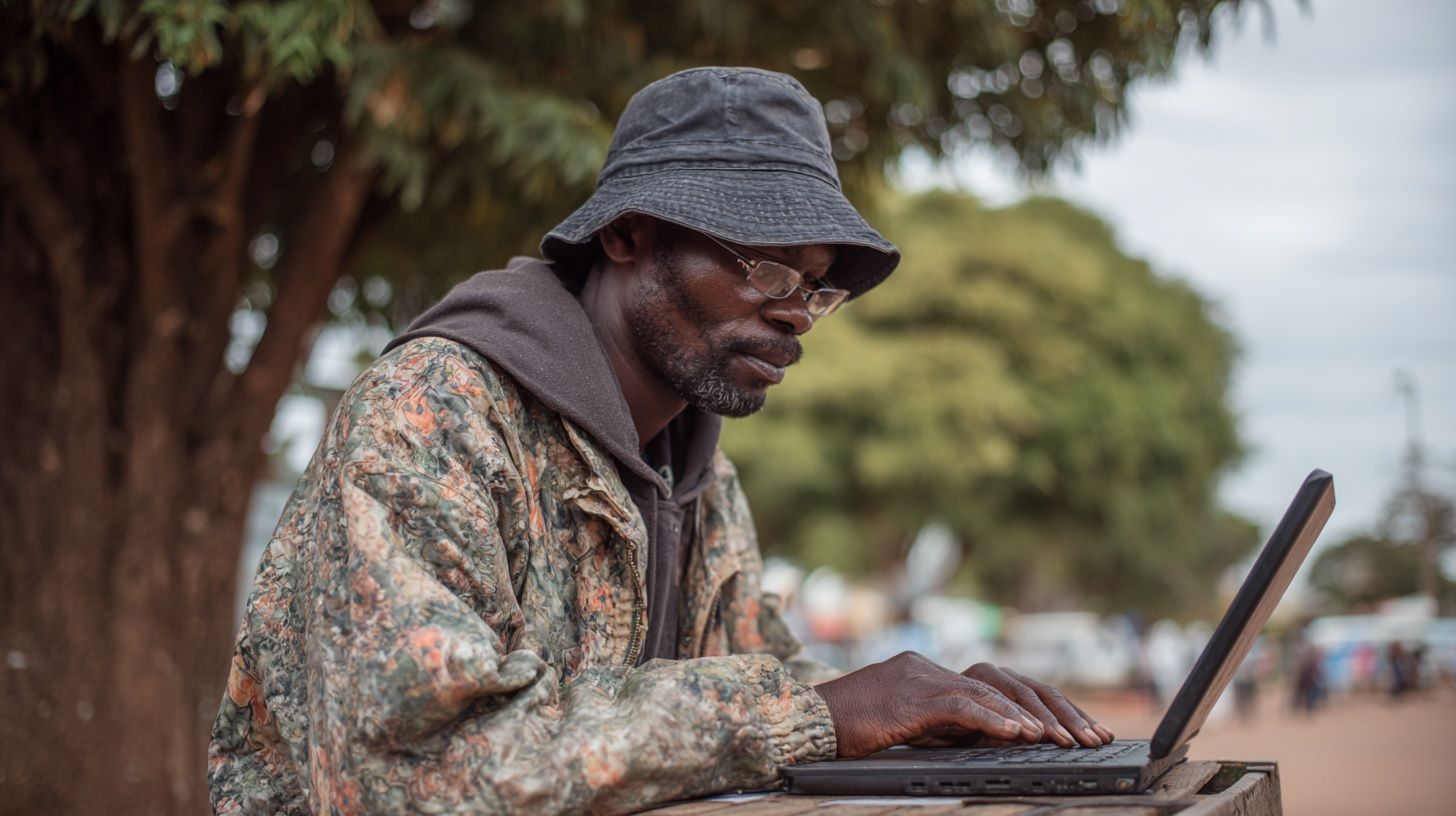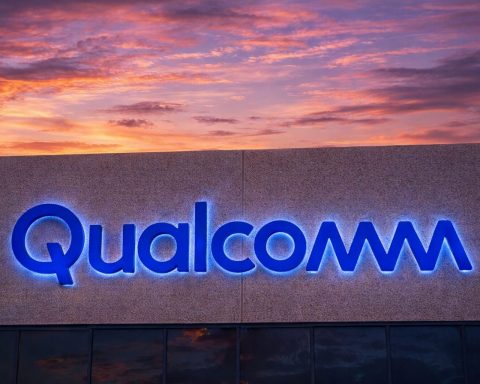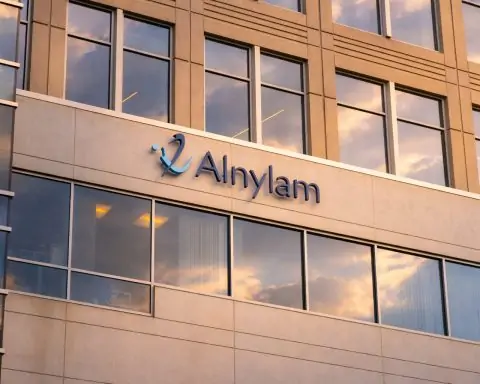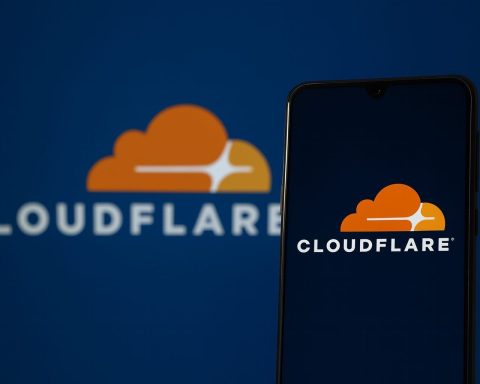- In 2000 Zimbabwe’s internet penetration was about 0.3%, rising to around 15% by 2011.
- The first ISPs were Data Control & Systems in 1994 and MWEB in 1995, with ZISPA counting nearly 30 ISPs by the 2000s.
- By early 2023 there were over 14 million active SIMs, roughly 85% of Zimbabwe’s population.
- Median mobile download speed in 2023 was 10.9 Mbps.
- Starlink received a license in May 2024 and went live in Zimbabwe by September 2024, with starter kits priced around $350 (sometimes $170) and unlimited data at $30/month.
- Econet launched Zimbabwe’s first 5G sites in 2022, with NetOne announcing 5G plans.
- Liquid Intelligent Technologies, formerly Liquid Telecom, built Zimbabwe’s largest fiber network over more than a decade, linking to undersea cables via South Africa and Mozambique.
- Murambinda Community Network in Buhera began in 2003 as a small cybercafe and now serves a 40 km radius with solar-powered masts and local maintenance training.
- In 2018 Zimbabwe had the highest mobile data cost in Africa at $25 per GB, per the Alliance for Affordable Internet.
- The Universal Service Fund (USF) under POTRAZ has been underutilized, while dozens of Community Information Centres have been established to provide subsidized public access.
Zimbabwe connected to the internet relatively early, but access was very limited for many years. The first internet service providers (ISPs) emerged in the mid-1990s – Data Control & Systems was established in 1994 and MWEB in 1995 [1] [2]. At that time the internet was expensive and largely confined to corporations and elite users. Dial-up connections and rudimentary infrastructure meant very slow speeds and high costs [3]. By the late 1990s, only tens of thousands of Zimbabweans were online. Indeed, internet penetration was just 0.3% of the population in 2000, though it grew to around 15% by 2011 [4] [5].
Through the 2000s, growth accelerated as cybercafés mushroomed in cities and more people got online despite economic turmoil. The state-owned Post & Telecommunications Corporation (now TelOne) initially monopolized the backbone and sold bandwidth to private ISPs [6]. The Zimbabwe Internet Service Providers Association (ZISPA) counted nearly 30 ISPs by the 2000s, though many were small [7]. Major telecom companies like Econet Wireless entered the scene, and by the 2010s mobile phones became the primary on-ramp to the internet for most Zimbabweans. Still, internet access remained a luxury for many until recent years, due to infrastructure and cost barriers.
Infrastructure Today: Mobile Networks, Fiber Optics, and Broadband
Mobile Networks: Mobile broadband is the dominant form of internet access in Zimbabwe today. Three mobile network operators – Econet Wireless, NetOne, and Telecel – account for the majority of connections [8]. These operators provide 2G/3G coverage across most populated areas and have expanded 4G LTE to cities and towns. By early 2023 Zimbabwe had over 14 million active cellular connections (SIMs), equivalent to about 85% of the population [9]. Mobile internet speeds are modest: median mobile download speed was about 10.9 Mbps in 2023 [10]. Mobile networks have been upgrading to 4G and even started limited 5G rollout – Econet launched Zimbabwe’s first 5G sites in 2022, and NetOne has announced 5G plans [11]. However, rural coverage gaps persist, and many remote areas still only have basic or no signal.
Fiber Optics and Backbone: Zimbabwe’s fiber backbone infrastructure has expanded significantly, led by companies like Liquid Intelligent Technologies (formerly Liquid Telecom). Liquid (a subsidiary of Econet) spent over a decade building regional fiber routes that connect Zimbabwe to undersea cables via South Africa and Mozambique [12]. Liquid now operates the largest fiber network in Zimbabwe and also spans eight other African countries [13]. This backbone delivers international bandwidth and then feeds national backbones and metropolitan fiber rings in major cities. Other backbone providers include TelOne (the fixed telco) and Powertel (owned by the power utility), which maintain trunk fiber and older copper networks [14]. Fiber-to-the-premises is available in limited areas (mostly affluent suburbs of Harare and Bulawayo), while many businesses connect via fiber in city centers. Overall, fiber provides the core of Zimbabwe’s internet capacity, but last-mile fiber access for households remains relatively scarce.
Broadband Access Technologies: Besides mobile and fiber, Zimbabweans get online through various means: ADSL over copper phone lines, cable and WiMAX in some areas (historically offered by Africom and others), and fixed 4G/LTE or wireless broadband solutions. TelOne still offers ADSL2+ service in areas with copper infrastructure, though speeds top out around 4 Mbps [15]. TelOne and others have deployed fixed wireless LTE “home internet” in some neighborhoods, but these networks often reach capacity quickly [16] [17]. For businesses and urban users, dedicated wireless links and fiber leased lines are available from ISPs like Dandemutande. The variety of technologies underscores an evolving landscape – from legacy copper to modern fiber and wireless – patching together coverage across urban and rural Zimbabwe.
Key Internet Service Providers (ISPs) in Zimbabwe
A mix of mobile operators, fixed telcos, and private ISPs compete to provide internet services. The table below summarizes major ISPs and their offerings:
| Provider | Service Types | Coverage | Typical Pricing |
|---|---|---|---|
| Econet Wireless | Mobile (2G/3G/4G LTE; some fixed LTE plans) | Nationwide mobile network (largest) | Mobile data bundles (e.g. $1 for ~250MB) [18]; Unlimited 5 Mbps mobile plan for $45/month (1 TB FUP) [19] [20]. |
| NetOne | Mobile (2G/3G/4G LTE) | Nationwide (second largest mobile) | Competitive bundles similar to Econet (e.g. daily $1 social bundles) [21]; no widely advertised unlimited mobile package. |
| Telecel | Mobile (2G/3G, limited 4G) | Urban centers and highways (smallest mobile network) | Prepaid data bundles at similar rates (e.g. around $1 for 250MB); generally lower-cost, but smaller coverage footprint. |
| TelOne | Fixed ADSL, Fiber, Fixed-LTE (Blaze) | Cities and towns (ADSL in copper-served areas; fiber in select suburbs; LTE in some areas) | Example plans: 60 GB for ~$24/month, 200 GB for ~$64 [22]; Uncapped home fiber ~$90/month [23] (higher for business plans). |
| Liquid Home (ZOL) | Fiber (Fibroniks), Wireless LTE (WibroniX), VSAT | Major cities (fiber); LTE in many areas via Econet cell towers; VSAT countrywide | Wide range of data packages: 100 GB for ~$43 [24]; Home Unlimited ~$89/month (fair use applies) [25]. VSAT kits available for remote users (pricing varies). |
| Dandemutande (Utande) | Fixed Wireless LTE; Fiber; VSAT | Urban areas (Harare, etc. for fiber/Wi-Fi; VSAT in remote areas) | New “MAX” plans offer unlimited data: e.g. 10 Mbps LTE for $49, 15 Mbps for $89 [26]; Fiber plans from $95 (20 Mbps unlimited) [27]. Prior packages were $60 for 5 Mbps unlimited [28], now adjusted due to competition. |
| Starlink (SpaceX) | Satellite broadband (low-Earth orbit) | Countrywide (requires clear sky view; ideal for rural/remote) | Hardware ~$170–$350 (one-time); Service $30/month for unlimited ~100+ Mbps [29] [30] – currently the cheapest per Mbps internet in Zimbabwe. |
Table: Major ISPs in Zimbabwe (as of 2024-2025) – services, coverage, and indicative pricing. Sources: POTRAZ reports, company releases, and news articles [31] [32].
Zimbabwe’s ISP landscape also includes Africom (one of the early private ISPs, offering VoIP and formerly WiMAX services) and state-owned Powertel. These have smaller market share: Africom serves some corporate clients and niche markets, while Powertel primarily provides backhaul capacity and had a limited CDMA network.
Notably, Liquid Home (formerly ZOL) and TelOne are the key fixed broadband providers for home users, while Econet (with its subsidiaries) dominates mobile internet. A significant recent development was Econet’s introduction of the SmartBiz unlimited mobile data packages, which signaled a shift toward more affordable data. For $45 a month, subscribers get a 5 Mbps connection with 1 TB of data before speeds may be throttled [33] [34]. Higher tiers offer up to 50 Mbps for a premium [35]. This was unprecedented in a market where truly unlimited internet was formerly $200–$500 per month [36]. The response was enthusiastic, highlighting Zimbabweans’ pent-up demand for affordable connectivity.
Internet Affordability and Accessibility (Urban vs. Rural)
Internet access in Zimbabwe has long been constrained by high costs. For years, Zimbabwe ranked among the most expensive countries in Africa for data. A 2018 survey by the Alliance for Affordable Internet found Zimbabwe had the highest mobile data cost in the region at $25 per GB, far above neighbors like Zambia ($13) or Mozambique ($3) [37] [38]. Even as of 2021, 1 GB of mobile data cost nearly 45% of the average monthly income in Zimbabwe – an astounding figure that underscores the affordability gap [39]. This pushed many users to rely on social media bundles (e.g. WhatsApp or Facebook packages for $1/week) and public Wi-Fi hotspots as cheaper alternatives [40].
Affordability has improved slightly with dollarization of tariffs and new packages. By 2023, mobile operators priced data in USD or equivalent, stabilizing prices. For instance, Econet’s monthly 5 Mbps unlimited plan at $45 works out to ~$0.045 per GB (if fully utilized to 1 TB), a huge improvement in value [41]. Similarly, fixed ISP packages have come down: Utande in late 2024 cut its unlimited LTE plan to $49 (10 Mbps) to compete with Starlink [42]. TelOne and Liquid offer entry-level bundles of 10–20 GB for a few dollars (e.g. 15 GB for $6 on Liquid’s Wibroniks LTE [43]), making basic access somewhat more attainable. Nonetheless, for a typical Zimbabwean household, even $10 or $20 a month for internet can be prohibitive given prevailing incomes and economic challenges.
The urban-rural digital divide remains pronounced. Urban residents in Harare, Bulawayo, and other cities enjoy far greater connectivity options – multiple mobile networks, home fiber (in select suburbs), and Wi-Fi hotspots – whereas many rural communities have sparse coverage. It is estimated that only about 20% of the rural population has internet access, compared to much higher rates in cities [44]. Most rural users rely on basic mobile signals; some areas still have only 2G voice/SMS coverage or none at all. The cost barrier is also higher in rural areas, where incomes are lower and there are fewer shared access points. A city dweller might visit a café or community center for Wi-Fi, but a villager often must spend precious income on cellular data for any connectivity.
Government and operators have made some efforts to extend rural access – for example, installing solar-powered base stations in remote spots and deploying community information centers with internet. However, progress has been slow and uneven. The Universal Service Fund (USF) managed by the regulator POTRAZ is meant to finance rural telecom projects, but it has been underutilized in the past [45]. This contributed to rural areas lagging behind. Electricity shortages also impact both affordability and accessibility, as frequent power cuts disrupt networks and force operators to run generators (raising operating costs, which trickle down to consumers) [46]. In short, while urban Zimbabwe is gradually approaching affordable broadband, rural areas still face an uphill battle in both coverage and cost.
Government Policy and Regulation
The Zimbabwean government plays a significant role in shaping the digital connectivity landscape – sometimes enabling, and at other times constraining internet growth. POTRAZ (Postal and Telecommunications Regulatory Authority of Zimbabwe) is the regulator overseeing licenses, spectrum, and tariffs. In recent years, the government’s policies have focused on expanding infrastructure and oversight of the sector:
- Licensing and Market Structure: The telecom market has a mix of state-owned and private players. TelOne and NetOne are government-owned incumbents (fixed and mobile, respectively), whereas Econet and others are private. The government historically limited the number of mobile operators to three, maintaining a quasi-oligopoly. It has occasionally pushed for consolidation – for example, Telecel (the smallest mobile operator) has faced license uncertainty and at one point was 60% owned by the government. Licensing fees and regulatory compliance costs are significant, which can deter new entrants. Nonetheless, Zimbabwe recently opened up to innovative players, evident in the swift approval of Starlink’s satellite service in 2024 [47] [48].
- Interception and Censorship: Under laws like the Interception of Communications Act (2007), the government can monitor and intercept electronic communications, and it requires ISPs to route traffic via approved gateways [49] [50]. While day-to-day internet use is generally free of overt filtering, there have been incidents of government-ordered shutdowns. Notably, during public protests in January 2019, authorities directed ISPs to shut off internet access temporarily – a move enabled by centralized control over international gateways (TelOne and Powertel) [51]. Such actions raised concerns about the government’s willingness to restrict connectivity for political reasons, even as official policy speaks of ICT development.
- National ICT Policy and Plans: Zimbabwe has published policy documents aiming to boost connectivity, such as the National Broadband Plan and an ICT Policy framework. However, critics note these often lack concrete, time-bound targets for expanding access and lowering costs [52]. For example, there is an expressed vision to have universal internet access by 2030 in line with broader development goals, but interim milestones or funding plans are vague. One positive step has been reducing taxes on telecom equipment and services; the government in 2023 announced some tax incentives to encourage network expansion (mirroring strategies seen in Zambia) [53]. The authorities have also encouraged infrastructure sharing – urging mobile operators to co-locate towers and share fiber backbones – to avoid duplication of costs in sparsely populated areas [54].
- Digital Inclusion Initiatives: The government, often in partnership with international agencies, has rolled out programs like Community Information Centres (CICs) in post offices around the country. These CICs provide internet access and ICT training to the public at subsidized rates. Dozens of CICs have been established, equipped with computers and broadband, giving especially rural youths and entrepreneurs a place to get online. The ICT Ministry has also led campaigns to equip schools with computer labs and connect them to the internet (though many rural schools still lack electricity or telecom links). A notable collaboration is with the Internet Society, where the Ministry signed an MOU to support community networks as an alternative model for connectivity [55] [56]. This shows a growing recognition in policy circles that top-down, one-size-fits-all approaches need to be complemented by community-driven solutions to bridge the digital divide.
Overall, government policy in Zimbabwe is a mixed bag. On one hand, the state acknowledges the importance of the internet for economic development and has opened the door to technologies like satellites and 5G. On the other hand, economic constraints and political considerations (such as control of information) have at times slowed progress. Regulation of tariffs – POTRAZ must approve price changes – has protected consumers to a degree but also made it tricky for ISPs to price in local currency amid inflation [57] [58]. The coming years will test how policy can adapt to encourage investment (for example, simplifying permits for laying fiber or building towers) while ensuring internet remains open and secure.
Satellite Internet Services: Emergence and Impact
One of the most significant developments in Zimbabwe’s internet revolution is the advent of satellite broadband – literally taking connectivity to the skies. Traditionally, satellites (VSAT) have been used in Zimbabwe on a small scale for remote mines, NGOs, or businesses in areas with no terrestrial link. VSAT services (offered by companies like YahClick or local ISPs) were often very expensive, with limited bandwidth. This changed dramatically with Starlink, Elon Musk’s SpaceX satellite internet constellation, which began serving African countries in 2023 and officially launched in Zimbabwe in 2024.
Zimbabwe’s government approved Starlink’s license in May 2024, partnering with a local firm (IMC Communications) to distribute the service [59] [60]. By September 2024, Starlink was live in Zimbabwe and demand exploded – kits quickly sold out in Harare and surrounding areas [61] [62]. The appeal is clear: Starlink offers high-speed (~50–150 Mbps) low-latency internet anywhere you have a clear view of the sky. Crucially, it undercut local providers on price; the Starlink “mini” kit was initially around US$350 (later reportedly as low as $170 for a basic kit [63] [64]), and the monthly subscription only US$30 for unlimited data [65]. This made Starlink the cheapest broadband option in Zimbabwe on a per-month basis for such high speed, a game-changer for rural connectivity and a competitive threat to traditional ISPs.
Impact on Rural Connectivity: Satellite internet holds particular promise for rural Zimbabwe. Instead of waiting for fiber cables or cell towers (which may never economically reach a village of a few hundred people), a single Starlink dish can beam internet to that community. President Mnangagwa welcomed Starlink’s approval, noting it should bring high-speed internet “particularly in all the rural areas.” [66] Early adopters have formed cooperatives – for instance, several households on a street chipping in to share one Starlink connection via Wi-Fi – making it even more affordable per user [67]. The potential benefits are immense: rural schools can access e-learning resources, clinics can use telemedicine, farmers can get market info online, and families can connect to the world. The government has discussed leveraging Starlink by subsidizing kits or setting up community hubs equipped with shared terminals [68] [69]. Such community Starlink hubs at schools or clinics could also serve as venues for digital skills training, multiplying the impact of connectivity [70].
Competitive Response: The arrival of Starlink has spurred local ISPs to adjust. Facing a service that delivers >100 Mbps unlimited for $30, providers like Liquid Home and Utande could not maintain their old pricing. By late 2024, we saw price cuts: Utande slashed its package costs (e.g. introducing a $49 unlimited plan) [71], and Liquid announced promotions (including double data and slightly lower USD prices) [72] [73]. Even Econet’s $45 SmartBiz package can be seen as a preemptive response to satellite competition [74]. In effect, Starlink broke the monopoly of terrestrial providers and injected much-needed competition, which is driving prices down and service quality up. Consumers now have an alternative if they’re unhappy with an ISP’s data caps or outages: they can opt for a Starlink kit (some were even smuggled from neighboring countries before licensing) [75].
Challenges: That said, satellite internet in Zimbabwe faces a few challenges. There have been congestion issues in Harare after the initial Starlink rush, as too many users in one cell can degrade speeds [76]. SpaceX will need to add capacity or users will experience slowdowns during peak times. Additionally, the upfront hardware cost – even at $200 – remains out of reach for many, unless financing options or subsidies are provided. Power is another consideration: a Starlink dish and router need reliable electricity, which is not a given in parts of Zimbabwe. Solar+battery setups might be necessary to run them during load-shedding. Lastly, the regulatory environment will determine how freely satellite services can operate. Zimbabwe’s quick authorization of Starlink is a good sign; going forward, rules on spectrum for satellite-to-phone services (like AST SpaceMobile’s planned satellite 5G for NetOne [77]) and continued openness to global providers will influence the connectivity mix.
In summary, satellite internet – epitomized by Starlink – has already had a revolutionary effect on Zimbabwe’s internet scene in a short time. It promises to complement ground infrastructure by reaching the unreached, and its competitive pressure is driving positive change among incumbents. The “sky-high satellites” are now very much part of Zimbabwe’s connectivity story.
Digital Literacy and Inclusion Initiatives
Expanding physical access is one side of the coin; equally important is digital literacy and inclusion – ensuring people have the skills and opportunities to use the internet effectively. In Zimbabwe, a range of stakeholders (government agencies, NGOs, tech hubs, and community leaders) are working to boost digital skills and include marginalized groups in the online revolution:
- Community Networks and Grassroots Initiatives: A standout example is the Murambinda Community Network in rural Buhera district. Started by local entrepreneur Joseph Bishi as a small cybercafé in 2003, it evolved (with support from the Internet Society) into a community-run ISP serving a 40 km radius with broadband [78]. Murambinda’s network connects schools, clinics, and homes, and importantly trains local residents to maintain the equipment – fostering ownership and local tech skills [79] [80]. They even deployed solar-powered masts to overcome power outages, keeping the internet running during blackouts [81]. This model not only provides access but also creates a digitally literate community that can sustain the network. Inspired by Murambinda, other community networks are being piloted, such as a women-led network in Masvingo (Kyleview) focusing on empowering female leaders and serving remote areas around Great Zimbabwe [82] [83]. These bottom-up initiatives are critical in reaching rural populations and have gained recognition – Zimbabwe’s regulator and Ministry of ICT are now engaging with community network advocates to integrate them into national strategies [84].
- School and Youth Programs: Young Zimbabweans are a major focus for digital inclusion programs. Government and partners (UNICEF, NGOs) have launched projects to put computers in schools and train students in ICT. For instance, the Presidential e-Learning Programme has equipped some rural schools with solar-powered computer labs and internet connectivity. Workshops like the Zimbabwe Digital Education Indaba bring together teachers to share e-learning best practices [85]. Outside the formal system, tech hubs and coding bootcamps have sprung up in Harare – e.g. Muzinda Hub (an Econet-backed initiative) trained thousands of youth in programming and digital entrepreneurship. Such efforts aim to ensure the next generation can go beyond just consuming on WhatsApp to actually creating digital content and services.
- Public Access and Training Centers: As mentioned, Community Information Centres (CICs) have been established in many districts. These are often in refurbished post offices, with computers connected to TelOne or other ISPs, where people can access the web for a nominal fee or attend basic digital skills classes. The Ministry of ICT reported that hundreds of thousands of people have made use of CICs since their inception, using them for everything from e-government services to online job applications. Additionally, NGOs run digital literacy outreach – for example, Techzim (a local tech news outlet) and others sometimes host workshops on internet safety, coding for kids, and so forth in collaboration with sponsors.
- Inclusive Policies: On the policy front, Zimbabwe recognizes the need for inclusion. The National ICT Policy includes objectives to ensure gender balance in ICT access and to make internet accessible to people with disabilities. There are organizations like Mara and Pearl in Zimbabwe that focus on empowering women and girls with digital skills, addressing the gender gap in technology. While these policies and programs exist, challenges remain in implementation and scale. Many rural girls still have very limited exposure to computers compared to boys, and internet content is often not in local languages, which can exclude non-English speakers. Bridging these gaps will require sustained commitment and community-level engagement.
In essence, Zimbabwe’s internet revolution is not just about cables and satellites, but also about people. From a villager learning how to use a smartphone at a community hub, to youths in Harare developing apps, the country is slowly building a digitally savvy population. There is a growing understanding that internet inclusion – bringing everyone along – will multiply the benefits of connectivity. A farmer who knows how to look up weather forecasts or market prices online can improve their livelihood; a student who learns to code can create the next big startup. These small steps toward digital literacy across the nation are laying the human groundwork for Zimbabwe’s full participation in the global digital economy.
Comparing Zimbabwe with Neighbors (Zambia, Mozambique, South Africa)
Zimbabwe’s internet development can be placed in context by comparing it to some neighboring countries:
- Zambia: Another landlocked country, Zambia has followed a path similar to Zimbabwe in relying heavily on mobile broadband. As of 2023, Zambia’s internet penetration was estimated around 31% of the population [86], slightly lower than Zimbabwe’s ~35% [87]. Zambia’s government, however, claimed a connectivity surge to over 50% by 2024 after aggressive tax incentives and infrastructure programs [88]. Like Zimbabwe, Zambia has three mobile operators (including MTN and Airtel) which dominate internet access. Data costs were high but have been dropping; Zambia’s average 1GB price was about $13 in 2018 – half of Zimbabwe’s at the time [89]. In recent years Zambia has seen improvements with 4G expansion and even some 5G pilots. Notably, Starlink launched in Zambia earlier (mid-2023) and Zimbabweans were actually smuggling Starlink kits from Zambia before it was licensed locally [90]. This indicates Zambia’s regulator was somewhat ahead in embracing satellite. Overall, Zimbabwe and Zambia are now at comparable stages in connectivity, with Zambia possibly edging ahead in rural coverage (thanks to its Telecommunication Universal Access Fund projects) while Zimbabwe might have a slight lead in fiber backbone due to Liquid’s presence.
- Mozambique: In Mozambique, internet penetration stood around 23% in 2024 [91] – significantly lower than Zimbabwe’s. Being coastal, Mozambique has the advantage of direct access to undersea cables and has attracted investment in landing stations. However, the civil war legacy and vast rural areas mean infrastructure is uneven. Mobile operators (e.g. Vodacom Mozambique, MCel) provide 3G/4G in cities, but many rural Mozambicans remain offline. Mozambique’s data prices have historically been more affordable (about $3.30 per GB in 2018) [92], likely due to a combination of a stronger currency at that time and regulatory frameworks. In terms of new tech, Mozambique is one of the African countries where Starlink is officially available [93], which should boost rural access similarly to Zimbabwe. The government of Mozambique has also partnered with Brazil and others for satellite coverage of remote regions. Zimbabwe can be seen as slightly ahead in overall connectivity (higher usage rate, more extensive fiber networks), but Mozambique is catching up and benefits from easier international bandwidth access.
- South Africa: A regional powerhouse, South Africa is far ahead of Zimbabwe on most internet metrics. South Africa’s internet penetration is about 75% [94], with tens of millions of users and a robust mix of mobile and fixed broadband. South Africa had 5G rolled out by multiple operators in 2020-2021, boasts average speeds above 40 Mbps on mobile, and has extensive fiber-to-the-home in major cities. It also generates the majority of Africa’s internet traffic and content (many regional data centers and CDN nodes are in Johannesburg or Cape Town) [95] [96]. For Zimbabwe, South Africa is a key connectivity partner – many Zimbabwean ISPs buy transit from South African peers, and much content is accessed via South African servers. In terms of cost, South Africa’s competitive market means 1GB mobile data can be as low as $2–$3 with promotions (though standard rates are higher). The gap in digital access between South Africa and Zimbabwe is significant: urban South Africans stream Netflix and do e-commerce routinely, whereas many Zimbabweans are still coming online primarily for social media and basic use. That said, Zimbabwe can learn from South Africa’s success in liberalizing its telecom sector and investing in urban fiber. Importantly, South Africa’s delays in approving Starlink (due to regulatory hurdles) contrasts with Zimbabwe’s quick embrace – ironically giving Zimbabwe an edge in satellite internet availability in 2024.
In summary, Zimbabwe sits in the middle tier of Southern African countries when it comes to internet. It is not as connected as South Africa, but it has made strides that put it ahead of some neighbors like Mozambique in percentage terms. Zambia’s trajectory is similar, with both countries pushing toward the 50% penetration mark (depending on the data source) and grappling with affordability issues. All these countries share common challenges of reaching rural populations and keeping internet prices within reach of the average citizen. They also stand to gain collectively from regional initiatives – for instance, fiber interconnections between them (Liquid’s network links Zim to Zambia and SA) and sharing best practices on regulation (through SADC forums or CRASA – the Communications Regulators’ Association of Southern Africa, where Zimbabwe participates and even advocates for community networks regionally [97]). As competition and new technologies spread in the region, we can expect Zimbabwe and its neighbors to continue driving toward greater connectivity for their people.
Challenges and Future Prospects
Despite the progress in Zimbabwe’s internet landscape, significant challenges remain on the road to a fully connected society:
- Infrastructure Gaps: Large portions of rural Zimbabwe still lack last-mile infrastructure. The cost to extend fiber or even 4G base stations to sparsely populated villages is high, and returns are low, so private operators hesitate without subsidies. While satellite internet can bridge some gaps, it requires equipment and power that may be scarce. Moreover, urban infrastructure needs upgrading – congested mobile networks in cities lead to slow speeds at peak times, and aging copper lines still used by many degrade service quality. Continued investment is needed in both urban capacity (more fiber, 5G rollout, additional spectrum for mobile operators) and rural coverage (perhaps leveraging solutions like solar-powered micro base stations, TV white space, or community networks).
- Economic and Power Crises: Zimbabwe’s macro-economic situation poses a dual challenge. Currency instability and inflation (as seen in recent years) complicate everything from ISP pricing models to importing equipment. Operators often must charge in USD or frequently adjust tariffs, which can hurt consumers’ ability to pay [98] [99]. Furthermore, the electricity shortages mean that even where internet is available, it might not be usable or reliable. ISP base stations and data centers run on generators during outages, incurring fuel costs and sometimes downtime. For end-users, charging phones or powering a home router is not trivial if lights are off half the day. Addressing the power supply issue (through grid improvements or off-grid solar solutions) is intertwined with improving internet uptime.
- Regulatory Hurdles: While the government has made some positive moves, bureaucracy can slow network deployment. Obtaining permits to lay fiber along roads or build towers on state land can be slow. High license fees and import duties on telecom equipment (if not waived) also deter expansion. Additionally, concerns linger about government interventions – an abrupt internet shutdown or increased surveillance could undermine user trust and international investment. Striking a balance between security and openness will be key. On the flip side, better enforcement of infrastructure sharing could reduce redundant costs (e.g., having Econet, NetOne, and TelOne each build separate fiber to the same town). The regulatory environment in the coming years needs to be one that encourages innovation (like allowing more ISPs or community networks to flourish) and investment (perhaps through public-private partnerships for rural connectivity).
- Digital Skills and Local Content: Another challenge is ensuring that Zimbabweans can make full use of the internet. Digital literacy, as discussed, is a work in progress. Many people who come online for the first time use it narrowly (for WhatsApp or Facebook). Expanding digital literacy programs will help citizens use the internet for education, business, and creativity. Similarly, development of local content and services is needed. E-government services, local language content, and locally relevant apps can drive more meaningful usage. If most online content is foreign or not tailored to Zimbabwean needs, some might question the internet’s utility. Encouraging startups and e-commerce (for example, through fintech integration like mobile money payments) will help convert connectivity into economic growth.
Looking ahead, the future prospects for internet expansion in Zimbabwe are cautiously optimistic. Several developments on the horizon could accelerate progress:
- 5G and New Technologies: As 5G slowly rolls out (Econet and NetOne are planning wider deployment), Zimbabwe could leapfrog in certain areas like advanced wireless broadband and IoT applications. Though mass 5G adoption is a few years off (devices and coverage are limited now), trials in Harare have shown multi-hundred Mbps speeds. This could enable things like remote clinics using high-res telemedicine or smart agriculture sensors if extended rurally (perhaps via hybrid satellite-terrestrial setups).
- Regional Fiber Projects: Zimbabwe is poised to benefit from being a transit hub in southern Africa. Projects like the Google Equiano subsea cable landing in Namibia and South Africa can indirectly improve Zimbabwe’s capacity via Liquid and other carriers interconnecting. There are plans for a second fiber link to undersea cables through Botswana/Namibia which could supplement the existing Mozambique and South Africa routes. More bandwidth and redundancy usually translate to lower wholesale prices and more reliable internet domestically.
- Starlink Expansion and Competitors: By 2025, Starlink will likely increase capacity and perhaps introduce even cheaper plans or localized pricing. Other satellite constellations are also emerging (OneWeb, Amazon’s Project Kuiper) which could offer services in Africa. This growing competition in the skies could further drive down satellite internet costs, making it a permanent fixture and viable universal service option. The government’s idea of subsidizing terminals for rural communities might gain traction if prices drop to, say, $100 for hardware. We could see a future where every village has a shared satellite link powering a community Wi-Fi hotspot.
- Policy Reforms: The government has set a vision of a “Digital Economy” by 2030 as part of national development plans. If this is taken seriously, we might see increased budget allocation to ICT infrastructure, revival of the USF to fund rural towers, and incentives for local tech industry growth. Already, there is talk of establishing an ICT innovation fund to support startups that build apps for local needs. Should political will align with these goals, Zimbabwe could accelerate internet use in sectors like agriculture (market information systems), health (mobile health services), and education (online curricula and digital libraries).
In conclusion, Zimbabwe’s journey from lagging signals – the early days of near-zero connectivity – to sky-high satellites beaming internet from space has been dramatic. The country has overcome not only technical hurdles but also economic and political storms to reach the current state. Challenges of affordability, access, and skills persist, but the trajectory is upward. Every new fiber link laid, every 4G tower lit, every Starlink dish installed on a rural homestead is a step toward a more connected Zimbabwe. If stakeholders continue to innovate and collaborate, the coming decade could finally deliver the long-promised vision of affordable, ubiquitous internet across Zimbabwe – empowering its people and transforming its economy.
Sources: Historical context and ISP data from Paynow Zimbabwe and TechZim [100] [101]; infrastructure and backbone details from Paynow and Liquid Tech reports [102]; penetration and usage statistics from DataReportal (2023) [103]; pricing and affordability from A4AI and ITWeb Africa [104] [105]; government policy insights from ITWeb Africa and Freedom House [106] [107]; Starlink and satellite developments from Reuters and Connecting Africa [108] [109]; digital inclusion case study from Internet Society [110] [111]; regional comparison data from DataReportal and Insider reports [112] [113]. All information is current as of 2024-2025.
References
1. www.paynow.co.zw, 2. www.chatsports.com, 3. www.chatsports.com, 4. freedomhouse.org, 5. freedomhouse.org, 6. www.paynow.co.zw, 7. www.paynow.co.zw, 8. www.reuters.com, 9. datareportal.com, 10. datareportal.com, 11. www.techzim.co.zw, 12. www.paynow.co.zw, 13. www.paynow.co.zw, 14. www.paynow.co.zw, 15. zimpricecheck.com, 16. zimpricecheck.com, 17. zimpricecheck.com, 18. itweb.africa, 19. www.techzim.co.zw, 20. www.techzim.co.zw, 21. itweb.africa, 22. zimpricecheck.com, 23. zimpricecheck.com, 24. zimpricecheck.com, 25. zimpricecheck.com, 26. technews.co.zw, 27. technews.co.zw, 28. www.reddit.com, 29. www.connectingafrica.com, 30. www.heraldonline.co.zw, 31. itweb.africa, 32. www.connectingafrica.com, 33. www.techzim.co.zw, 34. www.techzim.co.zw, 35. www.techzim.co.zw, 36. www.connectingafrica.com, 37. insiderzim.com, 38. insiderzim.com, 39. itweb.africa, 40. itweb.africa, 41. www.techzim.co.zw, 42. technews.co.zw, 43. zimpricecheck.com, 44. www.heraldonline.co.zw, 45. itweb.africa, 46. www.connectingafrica.com, 47. www.reuters.com, 48. www.reuters.com, 49. freedomhouse.org, 50. freedomhouse.org, 51. www.paynow.co.zw, 52. itweb.africa, 53. www.telecompaper.com, 54. itweb.africa, 55. www.internetsociety.org, 56. www.internetsociety.org, 57. www.techzim.co.zw, 58. www.techzim.co.zw, 59. www.reuters.com, 60. www.reuters.com, 61. www.connectingafrica.com, 62. www.connectingafrica.com, 63. www.heraldonline.co.zw, 64. www.heraldonline.co.zw, 65. www.connectingafrica.com, 66. www.reuters.com, 67. www.connectingafrica.com, 68. www.heraldonline.co.zw, 69. www.heraldonline.co.zw, 70. www.heraldonline.co.zw, 71. technews.co.zw, 72. www.connectingafrica.com, 73. www.techzim.co.zw, 74. www.techzim.co.zw, 75. www.reuters.com, 76. technews.co.zw, 77. www.techloy.com, 78. www.internetsociety.org, 79. www.internetsociety.org, 80. www.internetsociety.org, 81. www.internetsociety.org, 82. www.internetsociety.org, 83. www.internetsociety.org, 84. www.internetsociety.org, 85. isoc.org.zw, 86. datareportal.com, 87. datareportal.com, 88. www.telecompaper.com, 89. insiderzim.com, 90. www.reuters.com, 91. datareportal.com, 92. insiderzim.com, 93. www.reuters.com, 94. datareportal.com, 95. www.africanews.com, 96. datareportal.com, 97. www.internetsociety.org, 98. www.techzim.co.zw, 99. www.techzim.co.zw, 100. www.paynow.co.zw, 101. www.techzim.co.zw, 102. www.paynow.co.zw, 103. datareportal.com, 104. insiderzim.com, 105. itweb.africa, 106. itweb.africa, 107. freedomhouse.org, 108. www.reuters.com, 109. www.connectingafrica.com, 110. www.internetsociety.org, 111. www.internetsociety.org, 112. insiderzim.com, 113. datareportal.com










